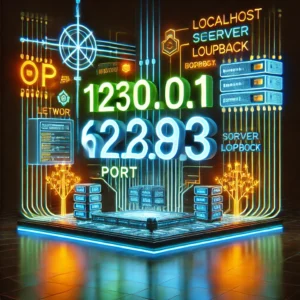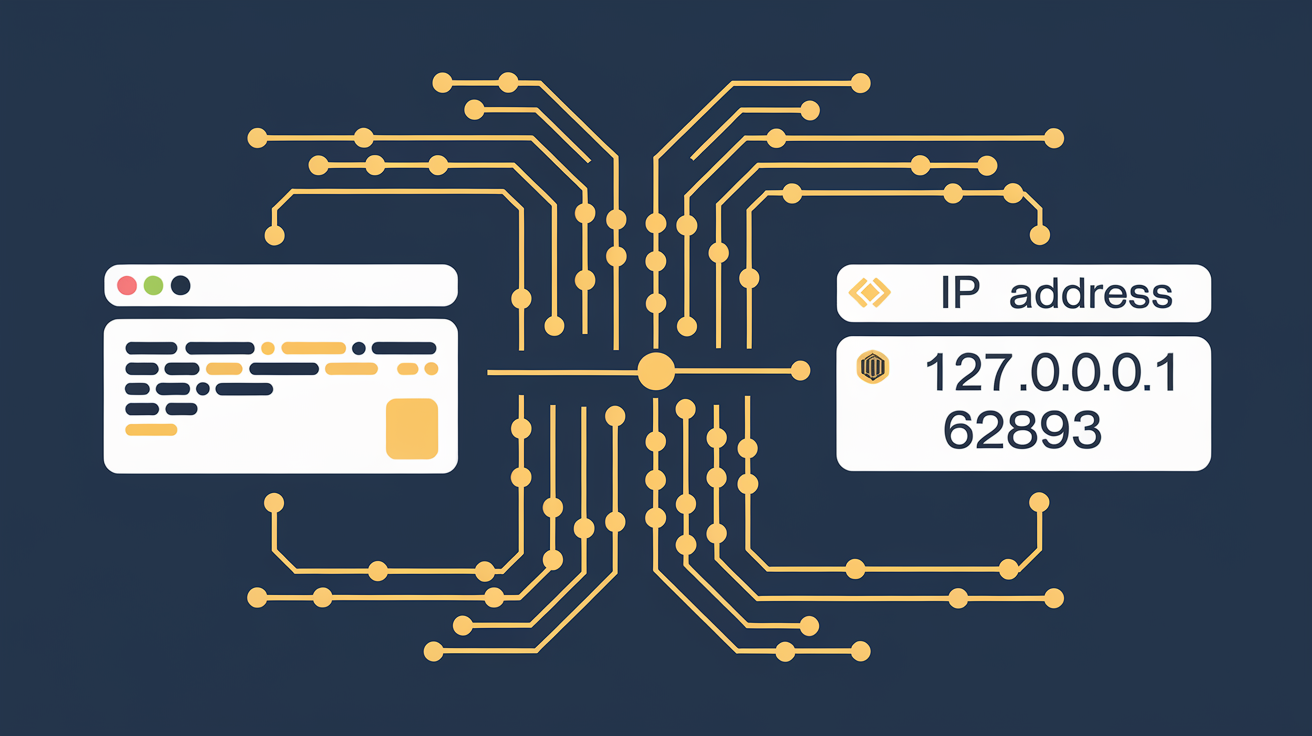The term “127.0.0.1:62893” may seem cryptic to the uninitiated, but it is a standard representation of a localhost IP address and port. In networking and software development, this combination has practical significance. This article explores what it means, how it functions, and its common use cases.
What is 127.0.0.1:62893?

The IP address 127.0.0.1 is universally recognized as the “localhost.” It is part of the loopback network, a virtual interface that computers use to communicate with themselves.
- Purpose: Localhost facilitates testing and development of networked applications without needing an external network connection.
- Scope: It is limited to the local machine, meaning traffic sent to
127.0.0.1never leaves the host system.
The 127.0.0.1 address is part of the larger 127.0.0.0/8 subnet, which is reserved for loopback purposes.
The Role of Ports: What is 62893?

When addressing 127.0.0.1:62893, the number 62893 specifies a port, which acts as a communication endpoint for data exchange. Ports allow multiple services to operate simultaneously on the same IP address.
- Range: Ports range from 0 to 65535, with 0-1023 designated as “well-known” ports. Ports above 49152, like
62893, are typically ephemeral or dynamic. These ports are often assigned temporarily for client-server communication. - Assignment: In many cases, port numbers like
62893are dynamically allocated by the operating system for specific applications or processes during runtime.
Use Cases for Localhost and Dynamic Ports
- Application Development:
Developers use127.0.0.1with dynamic ports like62893to test applications in a controlled environment. For instance:- Web Servers: Localhost is commonly used to test servers (e.g., Node.js, Flask) before deployment.
- Database Connections: Applications may connect to a database service on a local port during development.
- Inter-Process Communication (IPC):
Modern applications often use localhost and ports for IPC, enabling components of the same program to communicate efficiently. - Debugging and Troubleshooting:
Tools like Postman or curl can be used to simulate requests to127.0.0.1:62893to debug APIs and services running locally.
How to Interact with 127.0.0.1:62893
To interact with a service running on 127.0.0.1 at port 62893, you can use tools like:
- Web Browsers: Access the service by entering
http://127.0.0.1:62893in the address bar if it serves HTTP/HTTPS traffic. - Command Line: Use commands such as
curlortelnetto interact directly. For example: - Custom Applications: Client programs may communicate with the port if they are configured to do so.
Security Considerations
Although 127.0.0.1 is not accessible from external networks, security is still vital:
- Port Scanning: Ensure that only necessary services are listening on dynamic ports to reduce the attack surface.
- Access Control: Authenticate and validate data exchanged through localhost to prevent unauthorized actions.
- Firewall Rules: Block unintended access to ports, even on localhost, to avoid potential misuse.
Conclusion
The notation 127.0.0.1:62893 exemplifies the simplicity and power of localhost communication in modern computing. Understanding its function is essential for developers, system administrators, and networking professionals. Whether debugging applications, testing APIs, or enabling IPC, localhost and dynamic ports remain foundational in technology workflows.
By leveraging the flexibility and safety of 127.0.0.1, developers can confidently build and refine their applications before exposing them to the broader internet.







